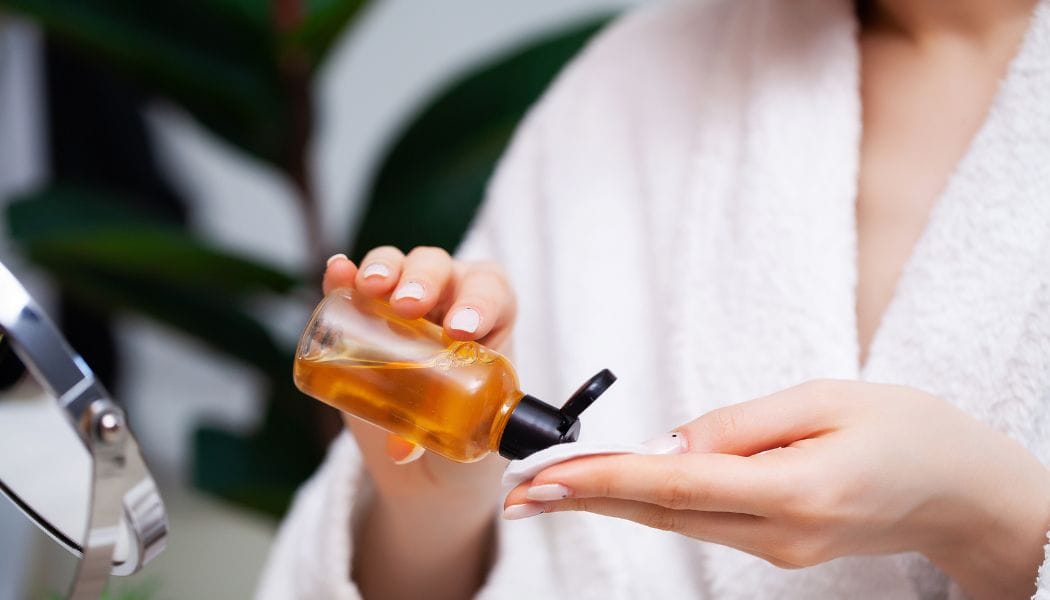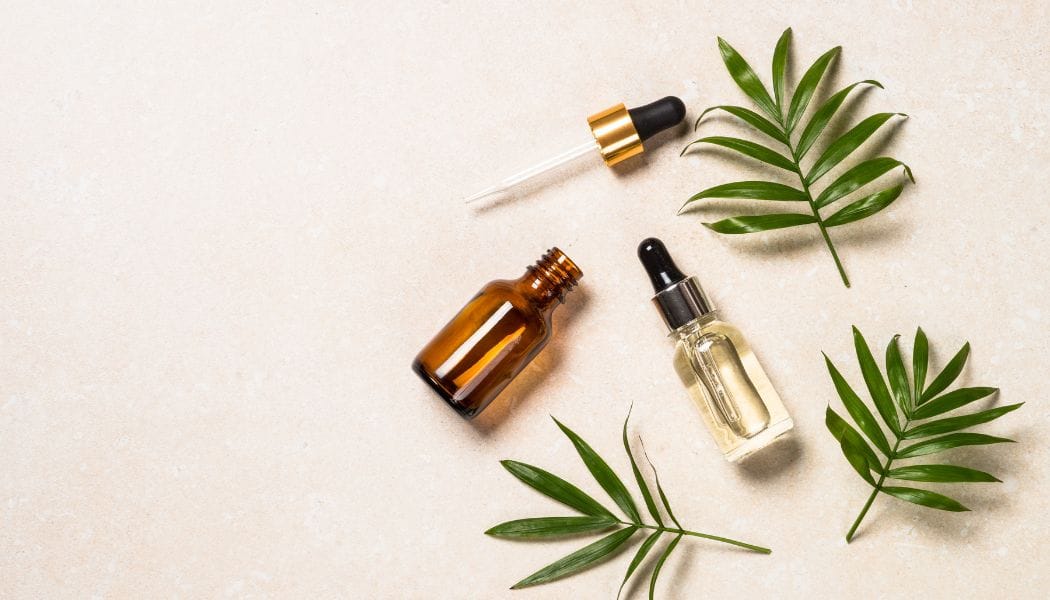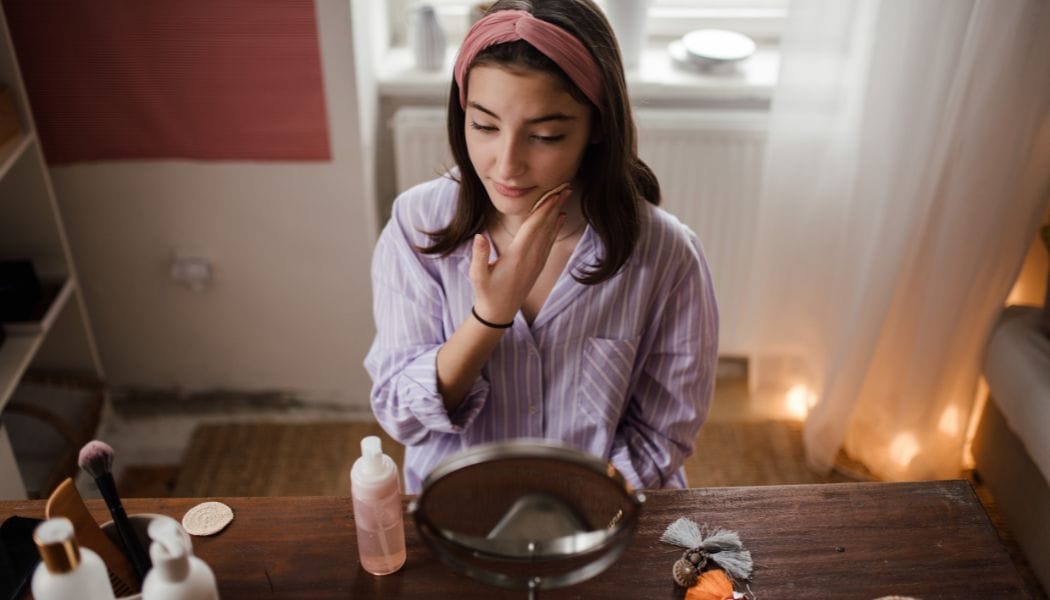One - Stop Solution for Skin Care Routines For All Skin Types
Taking care of your skin is essential for maintaining a healthy and radiant complexion. so we are here to help you through this blog.

In this constantly Busy and Stressful life, we mostly forget about skin care. Skincare plays a major role in maintaining and improving radiant and healthy skin. Skincare routines have a few steps that help your skin cleanse, tone, and moisturize.
In this blog, we will dig deeper into the skincare routine with a few tips, so don't miss out on reading the complete blog.
Skin Care Routine For Daytime

A daytime skincare routine is a set of steps that you have to follow during the day to take good care of your skin. Basic steps include Cleansing, toning, and moisturizing, but the products vary based on the skin type. Don’t be in a bubble; skincare routines are not restricted to women; the same steps apply to men's skincare routines.
Step 1:Cleanse

Cleansing is the very first step in your skincare routine. The cleanser helps you remove dirt, dead skin, and excess oil from your face. There are different types of skincare available, and you need to choose them based on your skin type.
How to apply cleanser:
Apply cleanser to your face by wetting it with lukewarm water and squeezing a tiny bit onto your hands. Focus on areas that are prone to filth and oil accumulation as you gently massage the cleanser onto your skin in circular strokes. Completely rinse with warm water, then pat dry
Suggested Face Wash for All Skin Types
Step 2:Tone

Toner is a skincare solution that is often used after cleansing to restore the pH balance of the skin, get rid of any last-minute pollutants, and prep the skin for the next steps.
How to Apply Toner
After cleansing, spray some toner on your face or apply a little quantity on a cotton pad. Focus on any areas of your skin that may have greater oil production or bigger pores as you gently massage the toner onto your skin. Before using further skincare biologique recherche products give the toner time to completely absorb.
Suggested Toners for All Skin Types
Step 3: Serums

Serums are highly concentrated compositions with active compounds that are intended to address certain skin issues. They offer a strong nutritional boost and can take care of a variety of problems, including hydration, brightness, anti-aging, or acne management. Since serums often have a smaller molecular size and are lighter in weight, they can deliver their therapeutic chemicals to the skin more efficiently by penetrating the skin deeper. Including serums in your skincare routine can help you tackle specific issues and increase the overall efficiency of your process.
How to Apply Serum
Cleanse and Tone Your Skin before using a face serum, and then distribute a little amount of the product onto your fingertips. Use upward strokes to gently massage the serum over your face and neck and wait for it to complete;y soak before putting on moisturizer.
Suggested Serums for All Skin Types
Step 4: Moisturize

As it aids in hydrating, nourishing, and protecting the skin's moisture barrier, moisturizer is crucial for maintaining healthy skin. It prevents dryness, calms irritability, and enhances the texture and look of the skin. Regular moisturiser use also promotes skin suppleness, delays the onset of premature aging, and provides a smooth surface on which to apply makeup.
How to Apply Moisturiser
Start with clean, dry skin before applying a moisturiser. Apply a tiny bit of moisturiser in various places on your face, including the forehead, cheeks, and chin. Cover your entire face and neck with a gentle upward massage using the moisturizer. Prior to using sunscreen or cosmetics, let it thoroughly soak.
Suggested Moisturisers for All Skin Types
Step 5: Protect With Sunscreen
Sunscreen is required after skincare because it offers vital protection from the sun's damaging UV radiation. It lowers the risk of skin cancer, premature aging, and sunburn. The final step in your skincare routine should be applying sunscreen to protect your skin from UV rays all day.
Night Skin Care Routine

Night time Skin Care is essential because it enables focused skin repair and renewal while you sleep, nighttime skincare is essential. The skin enters a regeneration condition at night, and using certain nighttime skincare products can speed up the process. Nighttime skincare promotes cell turnover, replenishes hydration, repairs environmental damage, and addresses particular skin issues including fine lines, wrinkles, and uneven skin tone. It promotes the greatest possible absorption of active substances and works to keep the skin looking young and healthy.
Steps for Night skin care
Step 1: Start by giving your face a thorough cleaning to get rid of any makeup, grime, and pollutants.
Step 2: Apply an appropriate serum or treatment that addresses your skin's individual needs, such as hydration or anti-aging.
Step 3: Finish by hydrating and repairing the skin overnight with a nourishing night moisturiser to support a radiant complexion. Applying an eye lotion to the sensitive eye region is optional.
Tips for Skin Care Routine:
- Cleanse your face twice a day to get rid of pollutants, oil, and grime, but don't overdo it or you'll lose your skin's natural oils.
- Even on cloudy days, protect your skin from UV radiation by using sunscreen with at least SPF 30.
- To keep your skin supple and avoid dryness, hydrate it by drinking lots of water and using moisturisers.
- Regular exfoliation will show a brighter complexion by removing dead skin cells, but be careful to prevent causing discomfort.




Comments ()